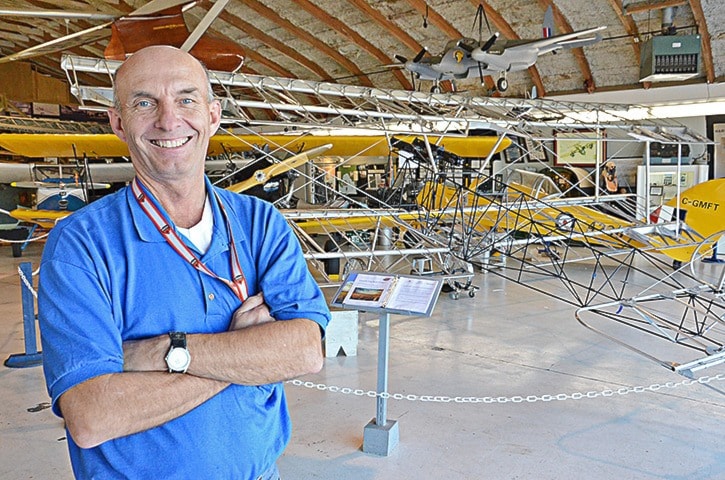The Sopwith Pups have arrived, and Canadian Museum of Flight volunteers are excited to transform them from skeletal frames to working aircraft.
“They’re as excited as school kids in a candy shop,” said museum manager Mike Sattler.
The Sopwith Pup frames are metal replicas of the kind of Royal Flying Corps fighter aircraft that flew over the trenches of the Western Front in 1917.
Their reconstruction is part of a project called “A Nation Soars,” a commemoration of Canada’s First World War aviators.
The local partnership involves the skills and craftsmanship of the museum’s volunteers, who have rebuilt or constructed historic aircraft many times in recent years, pilots with the Escadrille Northwest, the federal government, and a documentary crew, among others.
The eventual plan is to get the two Sopwiths to France next year, to fly them over Vimy Ridge as part of the 100th anniversary of that battle. Vimy Ridge was the first time that all the major Canadian land troops fought as a cohesive unit, and they captured a major objective.
The two skeletal Sopwiths were driven up to Langley by four museum volunteers from the U.S. factory where manufactured. The volunteers also did most of the assembly work, putting them together by hand like life-sized model planes.
Now over the next few months, volunteers will install engines and controls, and cover the skeletons with fabric skins.
A host of local dignitaries, including the B.C. Lieutenant-Governor, got their first look at the aircraft on Saturday evening during the annual Members Day Dinner.
There were a couple of replica machine guns sitting atop one of the Sopwiths.
“We thought we’d have some fun with it, put some guns on it,” said Sattler.
When completed, the aircraft will pay tribute to two Canadian air aces.
Joseph Fall and Lloyd Breadner both flew Sopwith Pups in 1917, and both survived the war.
Breadner’s red-and-silver nose cone and Fall’s all-red nose will be painted onto the finished planes.
When finished, the planes will need experienced pilots, but they won’t exactly be easy aircraft.
“These were originally flown by 19-year-old boys,” said Sattler.
They had faster reflexes than most of the museum pilots, he noted.
